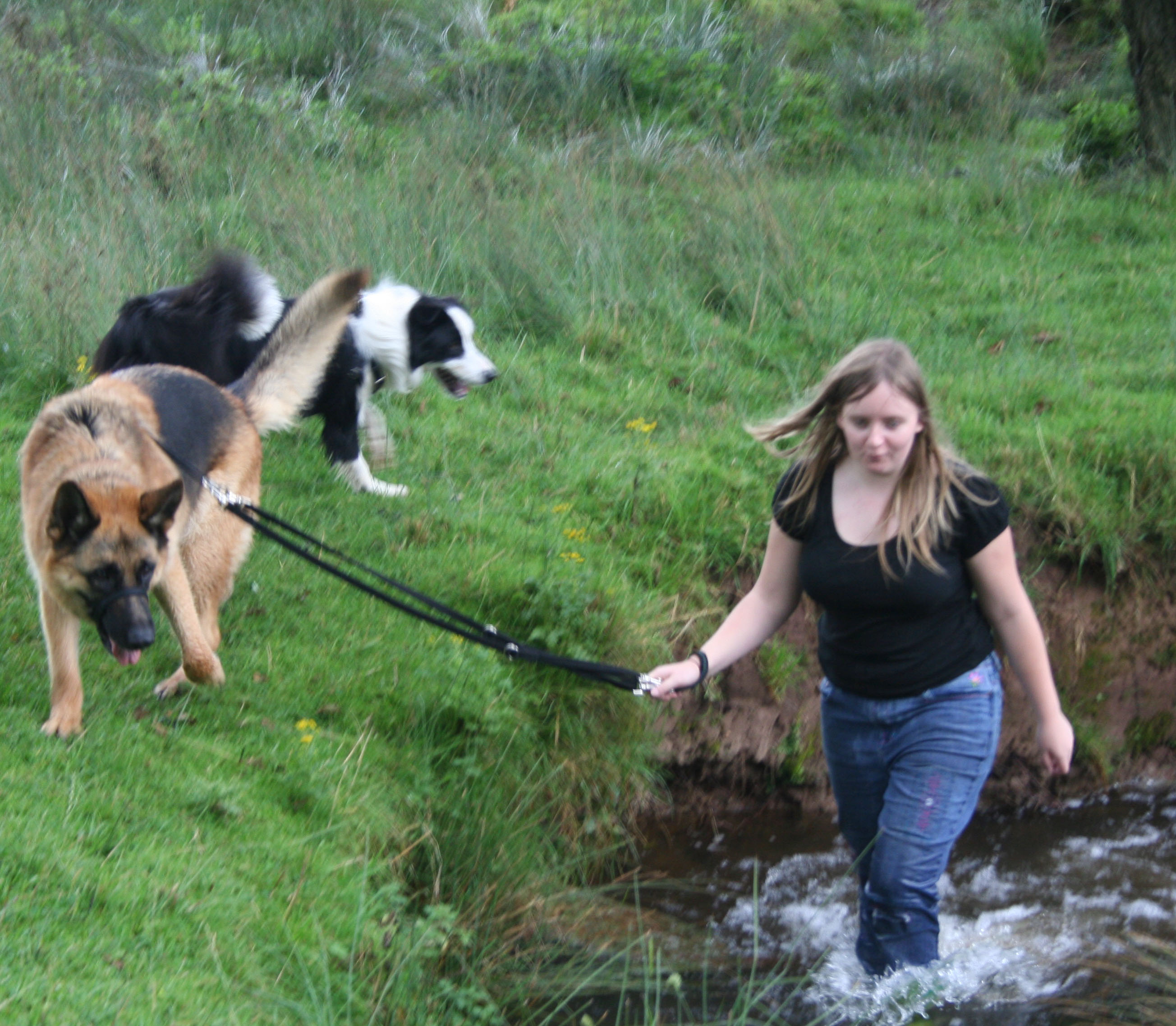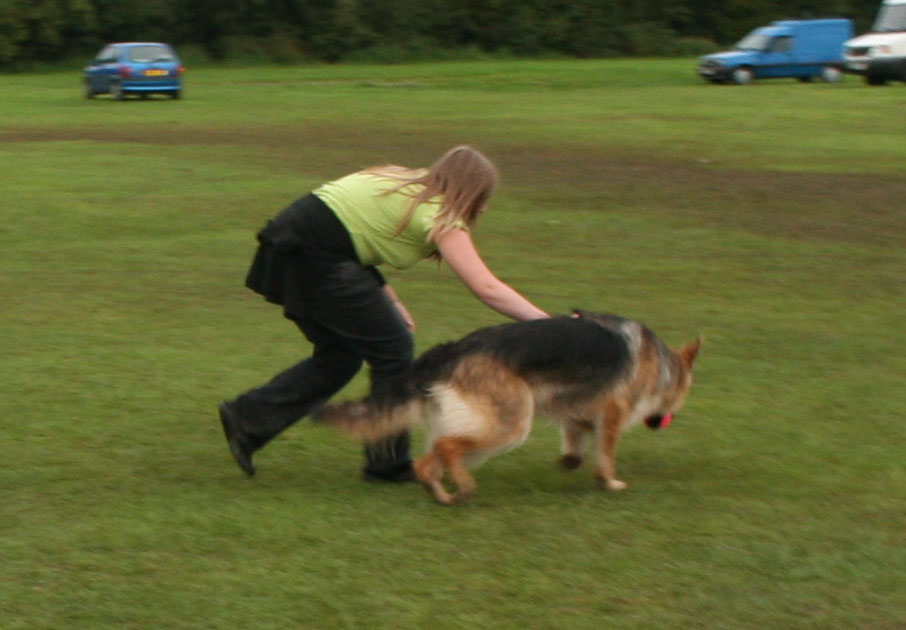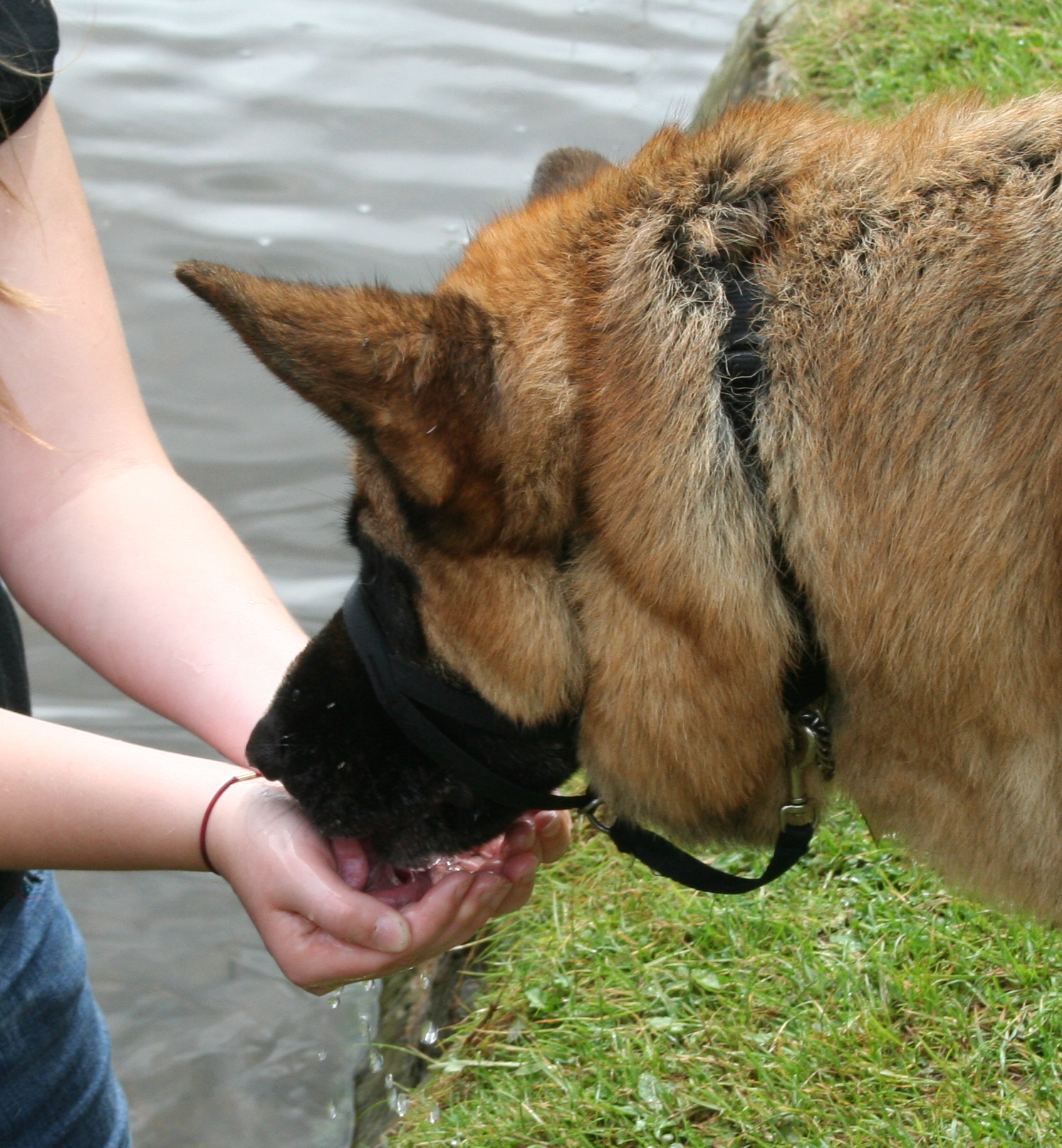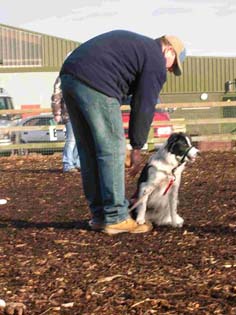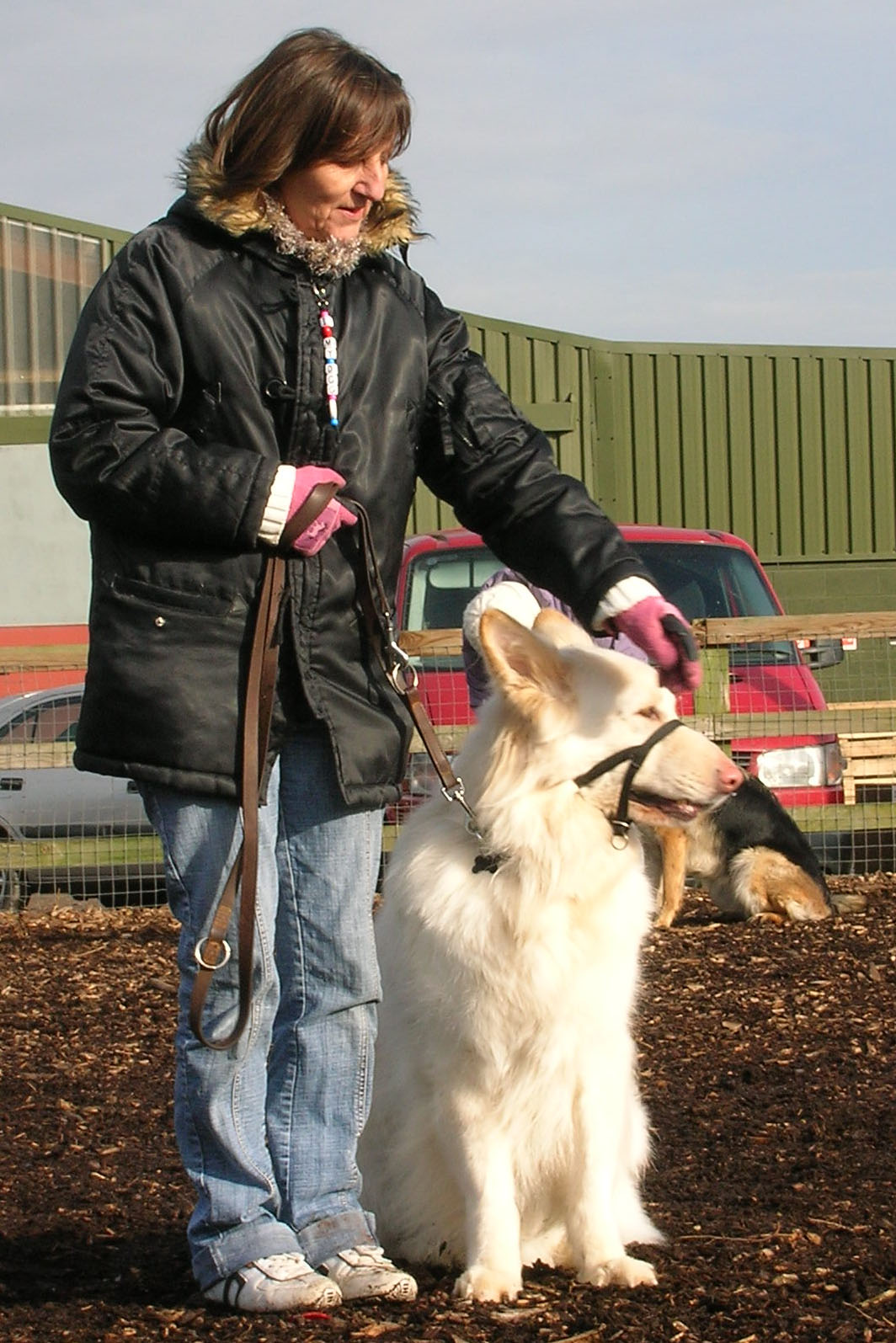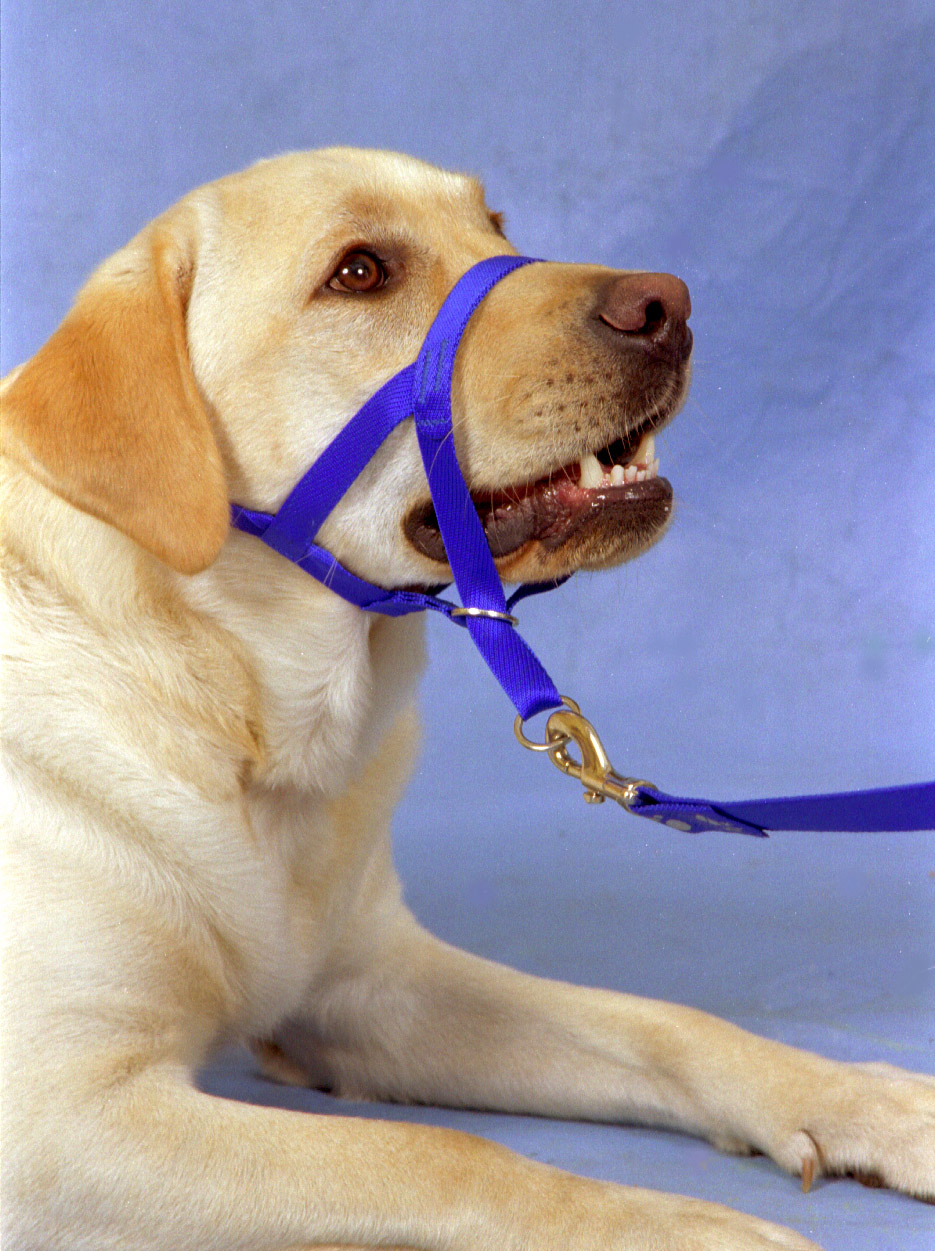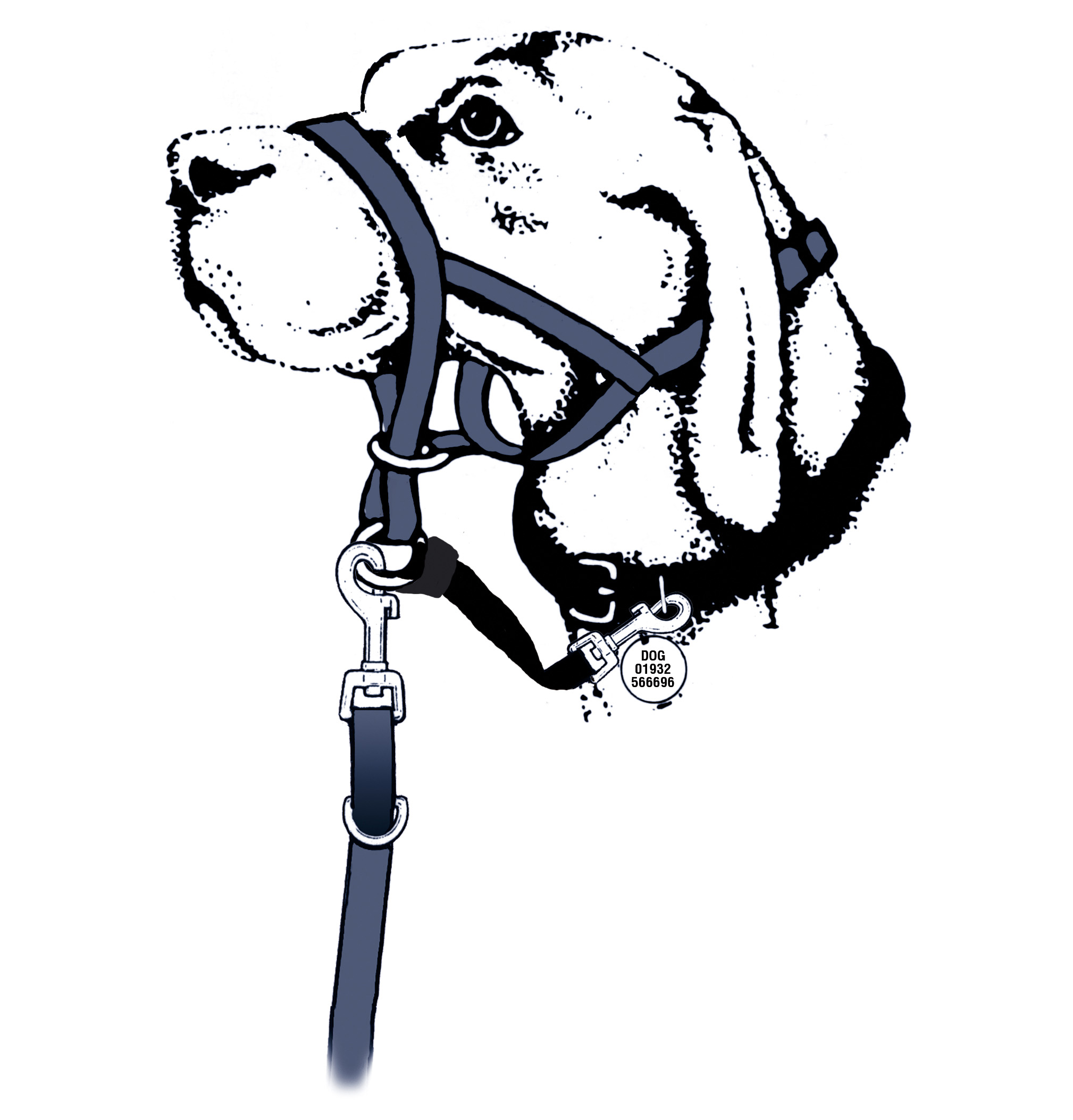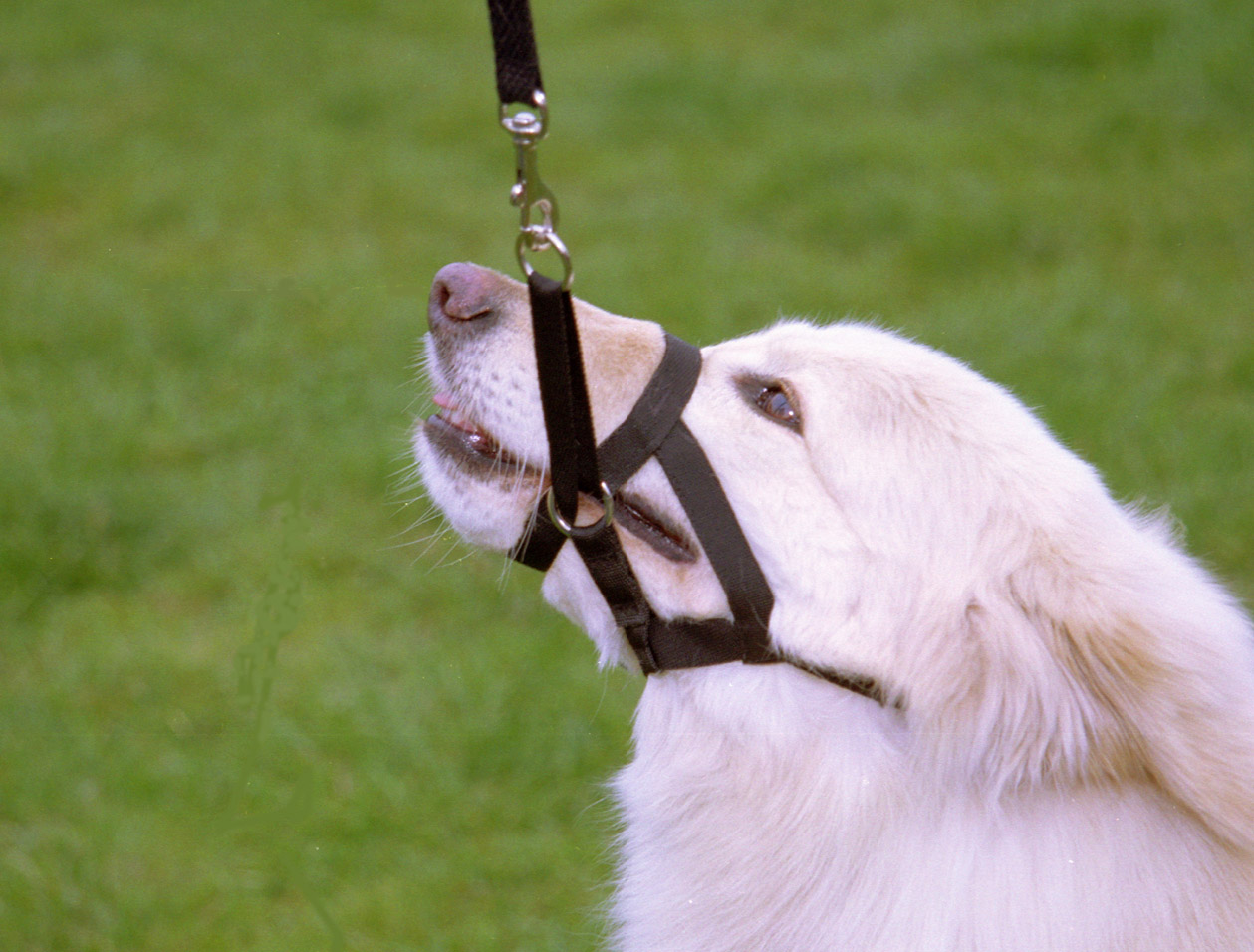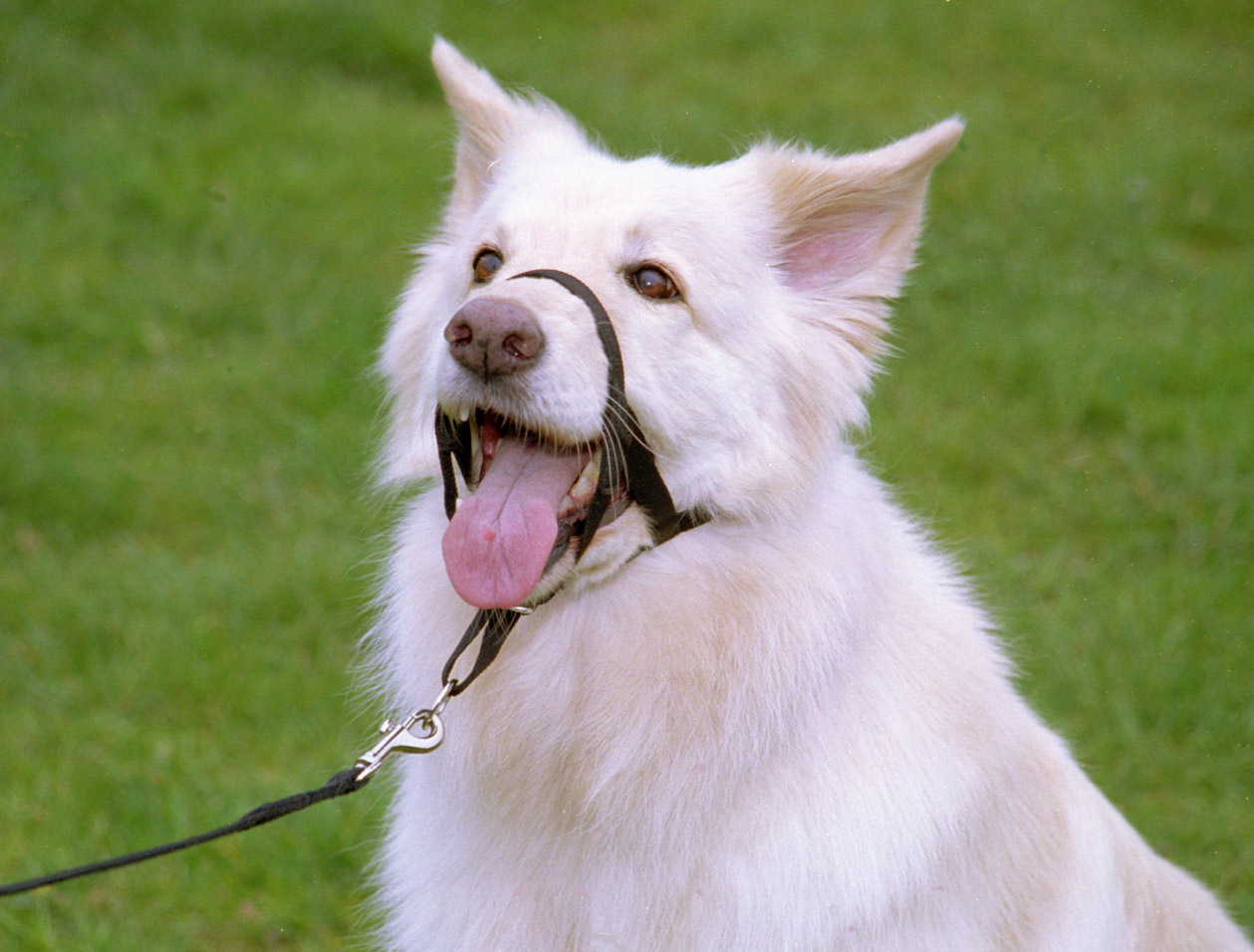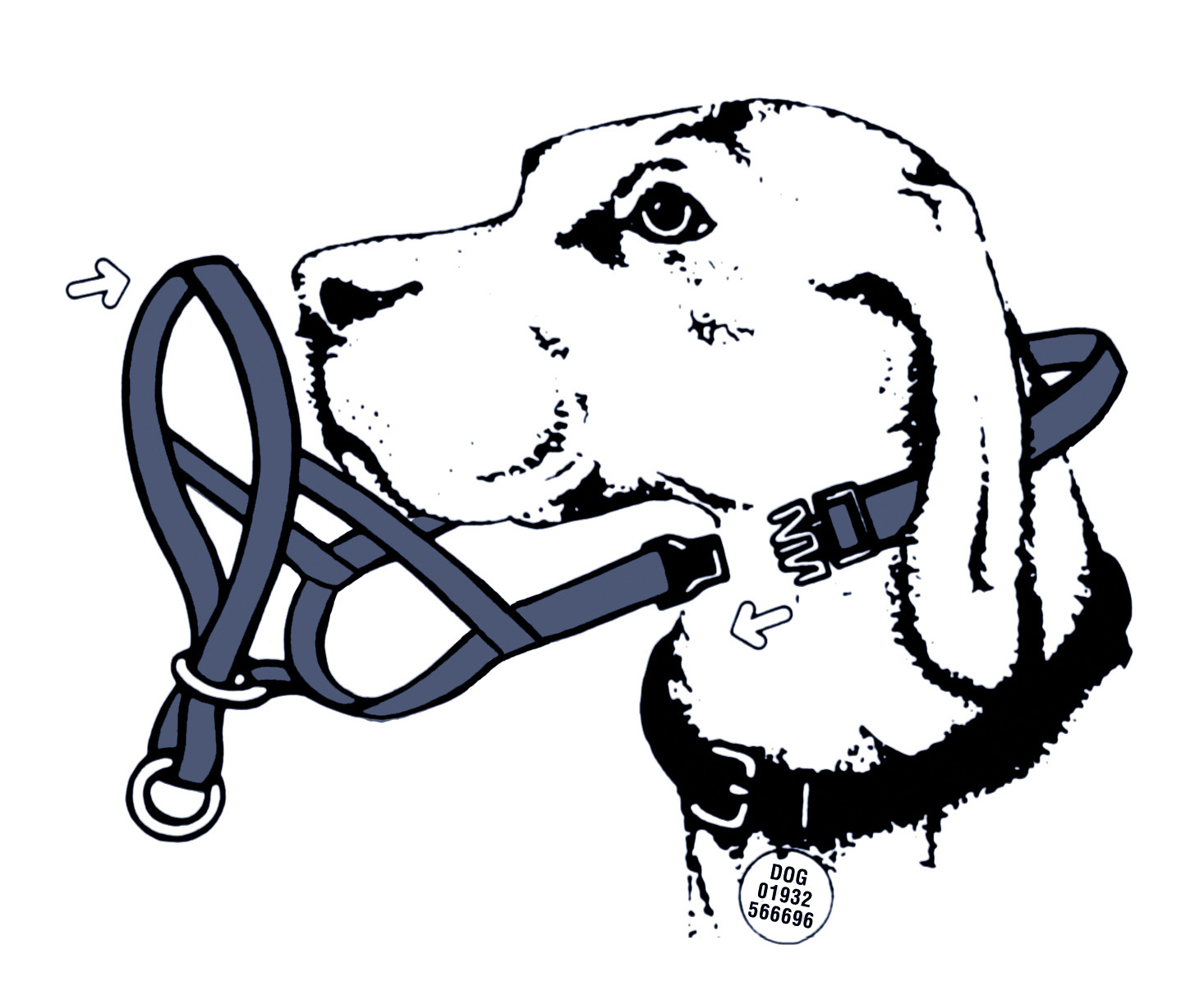WORLD OF DOGS.CC -
BASIC TRAINING
The Head Collar / Halti
This can lead to back and neck problems, you only have to see these dogs walking in the street to understand the damage that can be done. |
||||
The dogs cannot see properly, they cannot put their heads down into a relaxed position. They cannot sniff, they cannot even cock their leg!! Owners then wonder why when they do try a collar, the dog goes absolutely mad, dragging them everywhere. SUCH FREEDOM!! |
||||
| There is nothing wrong with the product BUT everything wrong with the way it is USED. | ||||
HOW THE HEAD COLLAR / HALTI WORKS |
|||||
| The Head Collar / Halti works on the same principle as the Halter used on horses. The Halter can hold a Shire Horse. If you control the head, then you control the forward movement. This works with the dog. The problems arise because the dog is smaller than a horse, so we tend to pull upwards, instead of holding. | |||||
Halti - with link |
Halti - |
Halti -dog's head and mouth free |
|||
A dog likes to have all round vision. He likes to see behind him and to be able to see to the sides and forward. German Shepherds in particular like to be in front. This is something to do with their protective instincts. They like to be able to see what is approaching, especially at night. |
|||||
HOW TO FIT THE HEAD COLLAR. |
|||||
|
|||||
| Only when the dog is comfortable with the collar, and I STRESS ONLY then do you attach the lead. | |||||
The dog will walk forward until the lead actions the collar, which stops the dog going any further. The best place to try this is in the garden, have plenty of treats with you, and keep your dogs attention on you and get him used to the lead. At first the dog will try to fight the collar, keep the lead loose, I repeat LOOSE. The dog will soon start to settle down, and learn to respect the collar and lead. If the dog pulls on the head collar, then use your steady command, and gently guide the dog towards you and immediately loosen the lead again. The lead must be loose at all times for your dog to enjoy his walk. Freedom of head movement is crucial to the dog's health and well being while out with you and your family. A qualified trainer will help you with any problems, although some trainers do not advocate the Head Collar. © Janet Wesley |
|||||
| Please do not hesitate to E-mail me for advice. Training@worldofdogs.cc | |||||
Contact Details: Janet Wesley
Tel: 0115 8462031
email:jJanetWesley@worldofdogs.cc
| Return to Top of Page |
© worldofdogs.cc
| Home Page | Training Advice | In Memory |
